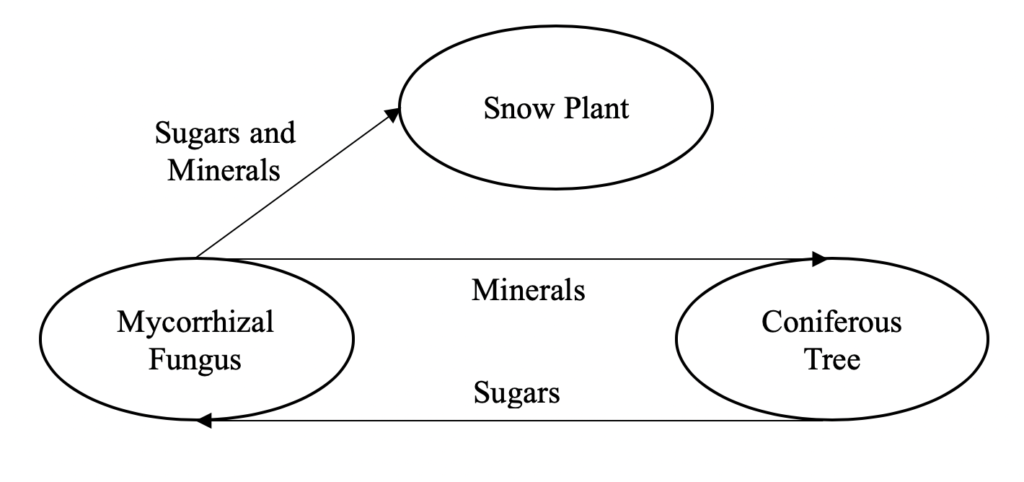In the last several last homeschooling tips we talked about mutualistic relationships. In this tip I’ll introduce a tool that you can use to represent such relationships (and others). It’s just a simple flow chart that lets you fill in the participants in a mutually beneficial relationship and what each of them contributes to the relationship. Here’s an example representation of a mutually beneficial relationship between beans and strawberries.

And another example representation of a mutually beneficial relationship between the roof and walls of a built structure.

You can also use diagrams like this to represent three (or more) way relationships.

The above diagram illustrates a mutualistic relationship between a fungus and a tree and a direct and indirect parasitic relationship between the beautiful snow plant and a fungus and a tree.
Now it’s your turn. Work with your child to come up with and represent some mutualistic relationships. I think designing systems, including human systems like schools, workplaces and communities that feature mutualistic relationships, is the key to humanity’s survival!